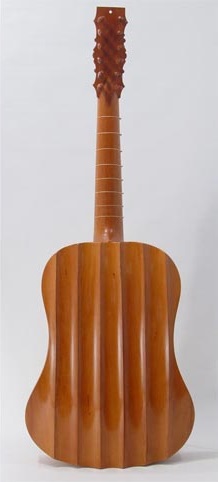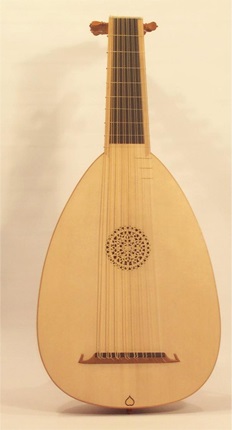
Approach to Instrument Making
I select extant instruments that I feel best represent the style of craftsmanship and tone of a musical era. Each period of musical history has its own aesthetic that manifests in, among other things, the instruments that were made and played in that period. I feel that the best way to recreate the musicality of an era is to try to capture the spirit rather than the appearance instruments used.
Therefore I don't make slavish copies of instruments. Rather I make instruments that try to capture the inspiration of the original instrument. We will never know exactly how instruments were made in times past. However, we do know many things about how instruments were made, tools and materials used, etc. By a study of the information available and careful analysis of the music and instruments I feel that we can get close to the original concept of musical instruments.
This is what I attempt to do when making an instrument.
You can check out our recent instrument projects page.
#
Hand-made in the USA by Gamut Music, Inc., a leader in the revival of early music strings and instruments. Gut strings are not intended to be used with fine tuners or string adjusters, and those devices should be removed before installing the gut string on the instrument.
All Gamut Academie strings (pure gut and gut/metal-wound) are made with beef serosa unless they specifically say "Sheep Gut." All pure gut Tricolore violin and viola strings are made with sheep gut; gut/metal-wound Tricolore and all Red Diamond strings are made with beef serosa.
Gamut gut string gauges are approximate (≈) diameter. Meaning, that while a ≈0.60mm string is polished in the workshop to a diameter of 0.60mm, changes in ambient humidity, temperature, shipping, and storage conditions can cause to string to expand or contract slightly.
Gimped gut strings and custom gauged equal tension strings are gauged with the equivalent-gauge (=) system. This means that the gauge listed, such as =1.50mm, indicates that the string is approximately equal in weight to a plain gut string of that diameter. Of course, because the wire is much heavier than gut, the string will be much thinner than a plain gut string.
More information about Gamut gut strings, string types, gauges, and string tensions can be found on our FAQ/Articles page. Not finding an answer to your question? Please contact us directly: support@gamutmusic.com.




